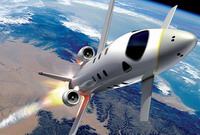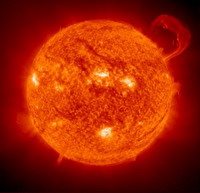Login form
Science
Saturn

Saturn is the second largest planet in our solar system, after Jupiter. It is the sixth planet from the Sun. Saturn is surrounded by spectacular rings. Italian astronomer Galileo was the first person to see the rings around Saturn. He thought the rings looked like handles. Galileo was looking at Saturn through one of the first telescopes, in 1610. In the 1650s, a Dutch astronomer named Christiaan Huygens was the first astronomer to see that the “handles” were really huge rings.
Space Travel
 You’re strapped into a seat. You hear a loud roar. Rocket engines fire and lift you into the sky. The rocket goes faster and faster, pushing you harder and harder against your seat. Suddenly, everything gets quiet. The engines stop. You take off your seat belt and start to float around. You are almost weightless. This is what space travel feels like.
You’re strapped into a seat. You hear a loud roar. Rocket engines fire and lift you into the sky. The rocket goes faster and faster, pushing you harder and harder against your seat. Suddenly, everything gets quiet. The engines stop. You take off your seat belt and start to float around. You are almost weightless. This is what space travel feels like.
GETTING INTO SPACE
Since ancient times, people have dreamed of leaving Earth and exploring other worlds. But gravity holds everything on the ground. Gravity is a pulling force between two objects.
Sun
 The Sun is very important to you. You play in sunshine. You see in daylight. The Sun keeps you warm. Even ancient people knew the Sun was very important. They thought the Sun was a god. The ancient Greeks thought the Sun god drove a chariot across the sky every day. The ancient Egyptians thought the Sun god sailed a boat across the sky. Today we know that the Sun is a star. The Sun is the star at the center of our solar system. Earth and all the other planets orbit, or go around, the Sun. The Sun is very important to all life on Earth.
The Sun is very important to you. You play in sunshine. You see in daylight. The Sun keeps you warm. Even ancient people knew the Sun was very important. They thought the Sun was a god. The ancient Greeks thought the Sun god drove a chariot across the sky every day. The ancient Egyptians thought the Sun god sailed a boat across the sky. Today we know that the Sun is a star. The Sun is the star at the center of our solar system. Earth and all the other planets orbit, or go around, the Sun. The Sun is very important to all life on Earth.
THE SUN IS A STAR
The Sun is a star—a ball of hot, glowing gas. It does not have any solid parts. It is made up mostly of hydrogen gas and helium gas. The Sun is huge compared with Earth.
Stars
 Go outdoors at night and look up at the sky. There are twinkling points of light everywhere. You are seeing thousands of stars that are millions of miles away. The stars look tiny because they are so distant. But if you could see those stars up close, you would see huge balls of fire.
Go outdoors at night and look up at the sky. There are twinkling points of light everywhere. You are seeing thousands of stars that are millions of miles away. The stars look tiny because they are so distant. But if you could see those stars up close, you would see huge balls of fire.
The closest star to you on Earth is the Sun. The Sun is a star at the center of our solar system. Our Sun is about 4.6 billion years old. There are stars that are older or younger than our Sun. There are stars that are much bigger. There are stars that have exploded and stars that are just being born.
Unidentified Flying Object
 You’re watching the sky after dark. It’s a clear night. Many stars are visible. Suddenly you see a streak of light. Perhaps it’s a shooting star. As you watch, it slows down. Now it’s a moving point of light. Maybe it’s a plane or a space shuttle. You see it slow to a stop.
You’re watching the sky after dark. It’s a clear night. Many stars are visible. Suddenly you see a streak of light. Perhaps it’s a shooting star. As you watch, it slows down. Now it’s a moving point of light. Maybe it’s a plane or a space shuttle. You see it slow to a stop.
Half a minute passes. Just when you think you’re looking at an ordinary star, it suddenly speeds away. In seconds, it disappears over the horizon.
Have you seen an unidentified flying object? Most certainly. Was it a spaceship from another planet? Almost certainly not.
